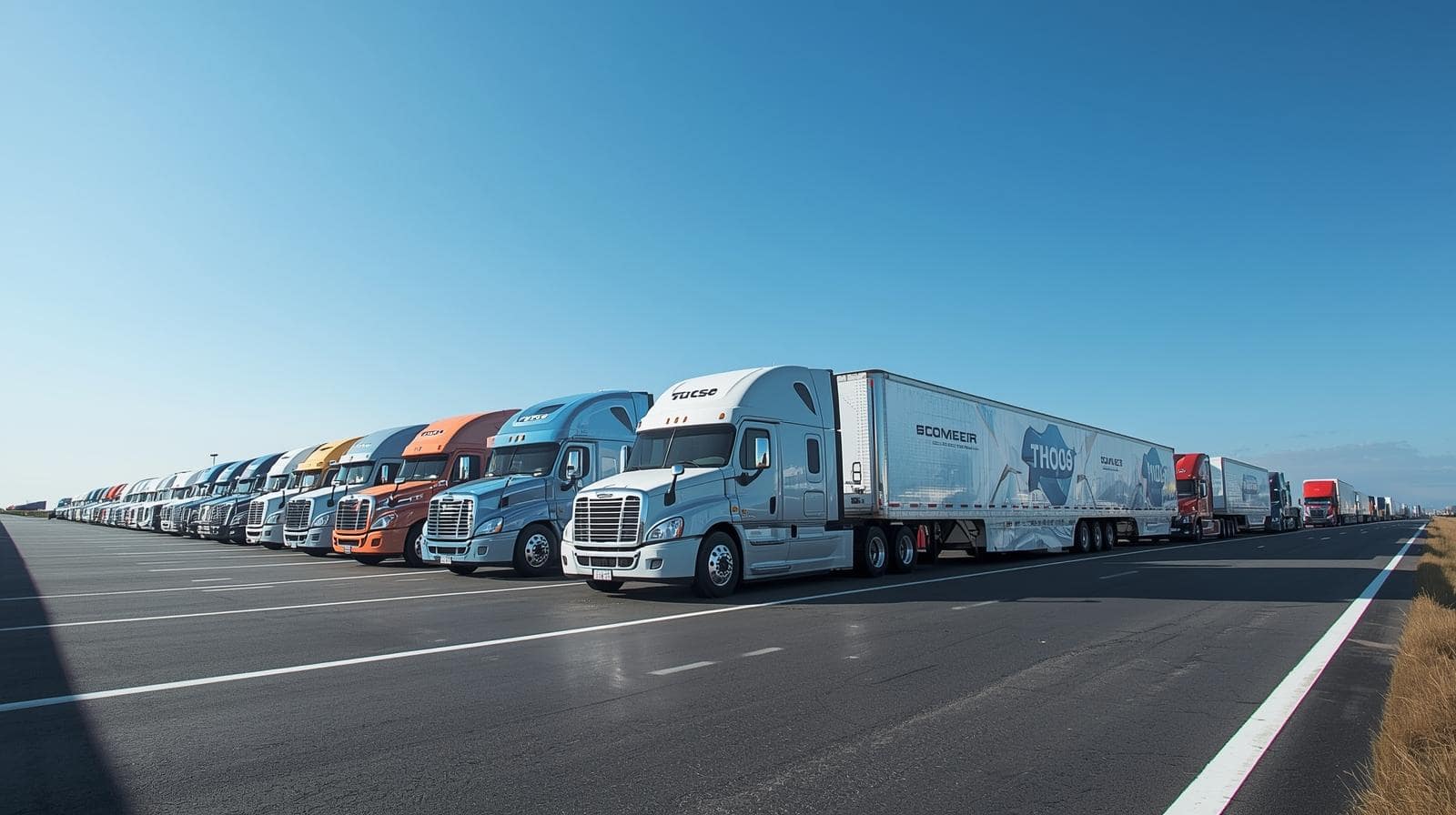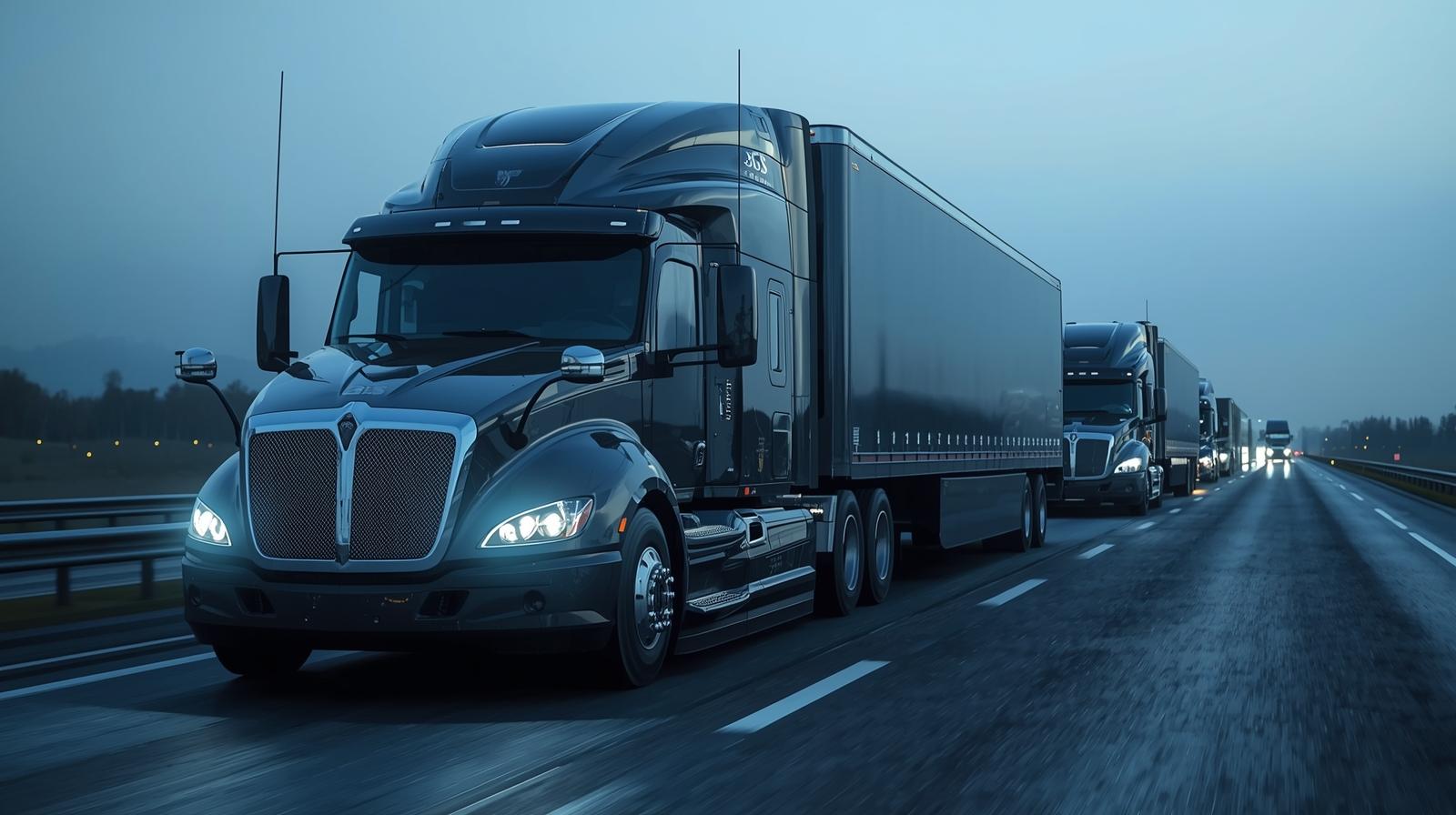Contents
- The Scale of the Fuel Challenge
- Regulatory Context Driving ROI
- ROI Framework: Step-by-Step
- Case Studies in the U.S. Market
- Technology Adoption Barriers and Solutions
- Why Ezlogz Is Positioned for U.S. Fleets
- Work Culture Shifts Enabled by Transparency
- Environmental and Market Impact
- Future-Focused Trends
- FAQ
U.S. fleets face rising diesel costs, shrinking margins, and mounting regulatory pressure. Advanced fuel management systems deliver measurable ROI by driving compliance, boosting efficiency, and preparing fleets for the future.
Trucking in America operates on razor-thin margins. Every gallon burned matters, every idle minute costs money, and every inefficiency compounds into lost profit. Fuel remains the single largest controllable expense, yet many carriers still depend on outdated tracking methods. Paper logs, fuel card slips, and manual spreadsheets conceal problems instead of solving them.
Adopting a modern fuel management system changes that equation. It transforms fuel from an unpredictable liability into a measurable, optimizable asset. The ROI isn’t a theory — it’s proven. Fleets that shift to data-driven systems recover costs quickly, achieve stronger compliance, and secure a long-term competitive advantage.
The Scale of the Fuel Challenge
Fuel represents 40-50% of total operating expenses in U.S. trucking. With diesel hovering between $3.50 and $5.00 per gallon, even small inefficiencies snowball into six- or seven-figure annual losses for mid-size carriers.
- Idling: A single truck idling three hours a day wastes roughly 1,000 gallons of fuel annually. Spread across a fleet of 100 trucks, that’s more than $400,000 burned each year at current diesel rates.
- Fuel theft and shrinkage: Studies show 5-10% of annual fuel spend disappears through siphoning, card misuse, or unverified fueling.
- Inefficient routing: Trucks logging unnecessary miles consume 15-20% more fuel compared to optimized routes.
Freight margins rarely rise above 8%. Eliminate just 5% of fuel waste, and you can effectively double net profit.
Regulatory Context Driving ROI
U.S. fleets don’t just buy fuel — they must also prove compliance across multiple regulatory frameworks. Fuel management systems reduce risk and labor tied to reporting.
FMCSA Requirements
The Federal Motor Carrier Safety Administration (FMCSA) mandates electronic logging devices (ELDs) and accurate hours-of-service records. Integrating fuel data ensures logs align with mileage and routing.
IFTA Compliance
The International Fuel Tax Agreement (IFTA) requires fleets operating across state lines to report quarterly on fuel purchased and miles driven in each jurisdiction. Manual processes risk errors and penalties. Fuel management systems automate these reports, cutting labor hours and audit risk.
IRS Fuel Tax Credits
Carriers may qualify for federal tax credits on off-road fuel usage. Automated systems provide the accurate breakdowns necessary to maximize claims and withstand audits.
Compliance isn’t optional. Systems that automate it reduce exposure, free staff resources, and protect ROI.
ROI Framework: Step-by-Step
Fleet owners often ask, “What’s the actual ROI?” Here’s a framework any operation can apply.
Step 1: Baseline Costs
Calculate total annual fuel spend. Example: 200 trucks consuming 20,000 gallons each at $4/gallon = $16 million annually.
Step 2: Identify Loss Factors
- Theft/shrinkage: 5% → $800,000
- Idling: 3 hours/day, 0.8 gallons/hour, $700,000
- Routing inefficiency: 10% → $1.6 million
Total waste: $3.1 million
Step 3: Apply Reduction Rates
Fuel management systems typically reduce theft by 80-90%, idling by 60-70%, and routing inefficiency by 10-15%. Conservatively, fleets can cut $2.2 million of waste.
Step 4: Subtract System Costs
Implementation and annual licensing may cost $300,000-400,000 depending on fleet size.
Step 5: ROI Formula
ROI = (Savings – Cost) ÷ Cost
ROI = ($2.2m – $0.35m) ÷ $0.35m = 529%
Case Studies in the U.S. Market
Small Fleet: 25 Trucks in Regional Hauling
- Baseline spend: $2 million/year
- Savings: 8% ($160,000)
- System cost: $50,000
- ROI: 220%
Mid-Size Carrier: 150 Trucks in Multi-State Operations
- Baseline spend: $12 million/year
- Savings: 12% ($1.44 million)
- System cost: $250,000
- ROI: 476%
Large National Carrier: 1,000+ Trucks
- Baseline spend: $80 million/year
- Savings: 10% ($8 million)
- System cost: $1.2 million
- ROI: 566%
These results align with industry benchmarks showing payback within 6-12 months.
Technology Adoption Barriers and Solutions
Perceived High Costs
Many fleets see upfront investment as prohibitive. Pilot programs help demonstrate ROI quickly. Vendors often offer scalable plans tailored to fleet size.
Driver Resistance
Drivers may resist monitoring, viewing it as surveillance. Linking metrics to performance bonuses transforms data into motivation, not punishment.
Integration with Legacy Systems
Older telematics or dispatch systems may not align with new software. Providers like Ezlogz design open platforms that integrate seamlessly.
Data Overload
Managers worry about drowning in reports. The best systems emphasize dashboards with actionable insights, not raw numbers.
Why Ezlogz Is Positioned for U.S. Fleets
Ezlogz provides an integrated platform that goes beyond fuel tracking.
- ELD compliance meets FMCSA mandates.
- Telematics and GPS unify fleet visibility.
- Fuel analytics detect anomalies in real time.
- Geofencing prevents unauthorized fueling.
- Driver scorecards connect habits directly to cost savings.
This consolidation reduces software sprawl, improves adoption, and increases ROI.
Work Culture Shifts Enabled by Transparency
Fuel management systems don’t just change numbers — they change behavior. Transparency fosters accountability.
- Drivers adjust idling and speeding when performance is tracked.
- Dispatchers optimize assignments with real-time data.
- Managers shift from suspicion to collaboration.
Culture becomes performance-driven, not reactive. Fleets build trust internally and credibility externally.
Environmental and Market Impact
Efficiency reduces emissions. Cutting just 10% fuel consumption across 500 trucks removes thousands of metric tons of CO₂ annually. Customers increasingly demand sustainable carriers, and major shippers include carbon performance in bid evaluations.
Adopting these systems positions fleets ahead of regulatory trends and strengthens their competitive appeal to environmentally conscious clients.
Future-Focused Trends
AI-Powered Route Optimization
Artificial intelligence will recommend fuel stops with the lowest prices along routes, reroute trucks in real time to avoid traffic, and learn optimal driving patterns.
Electric Vehicle (EV) Integration
As EV adoption grows, systems will track energy usage per mile, charging efficiency, and cost comparisons against diesel.
Hydrogen Fuel Trucks
Emerging hydrogen-powered fleets require precise tracking of fueling events and efficiency metrics. Fuel management platforms will evolve into total energy management systems.
FAQ
1. How soon can fleets recover system costs?
Most fleets achieve payback within 6-12 months through direct fuel savings and labor reductions.
2. Do systems work offline?
Yes. Data is stored locally and syncs once trucks reconnect to networks.
3. Can fuel cards alone prevent theft?
No. Cards reduce fraud but don’t track actual consumption. Pairing cards with onboard sensors ensures full accountability.
4. Are systems scalable?
Yes. Platforms like Ezlogz scale from 5 trucks to 5,000 without disruption.
5. Does it reduce maintenance costs?
Yes. Efficient fueling reduces engine strain, cutting long-term maintenance expenses.
For U.S. fleet owners and truck logistics managers, fuel management systems are no longer optional — they’re strategic. The ROI is clear, immediate, and compounding. These systems protect compliance, reduce waste, and prepare fleets for future technologies.
Ezlogz stands at the center of this transformation. By merging compliance, analytics, and telematics, it helps fleets convert one of their largest costs into a sustainable advantage. The numbers speak for themselves: payback within a year, ROI exceeding 400%, and cultural shifts that sustain performance. The fleets that adopt now will lead tomorrow.










